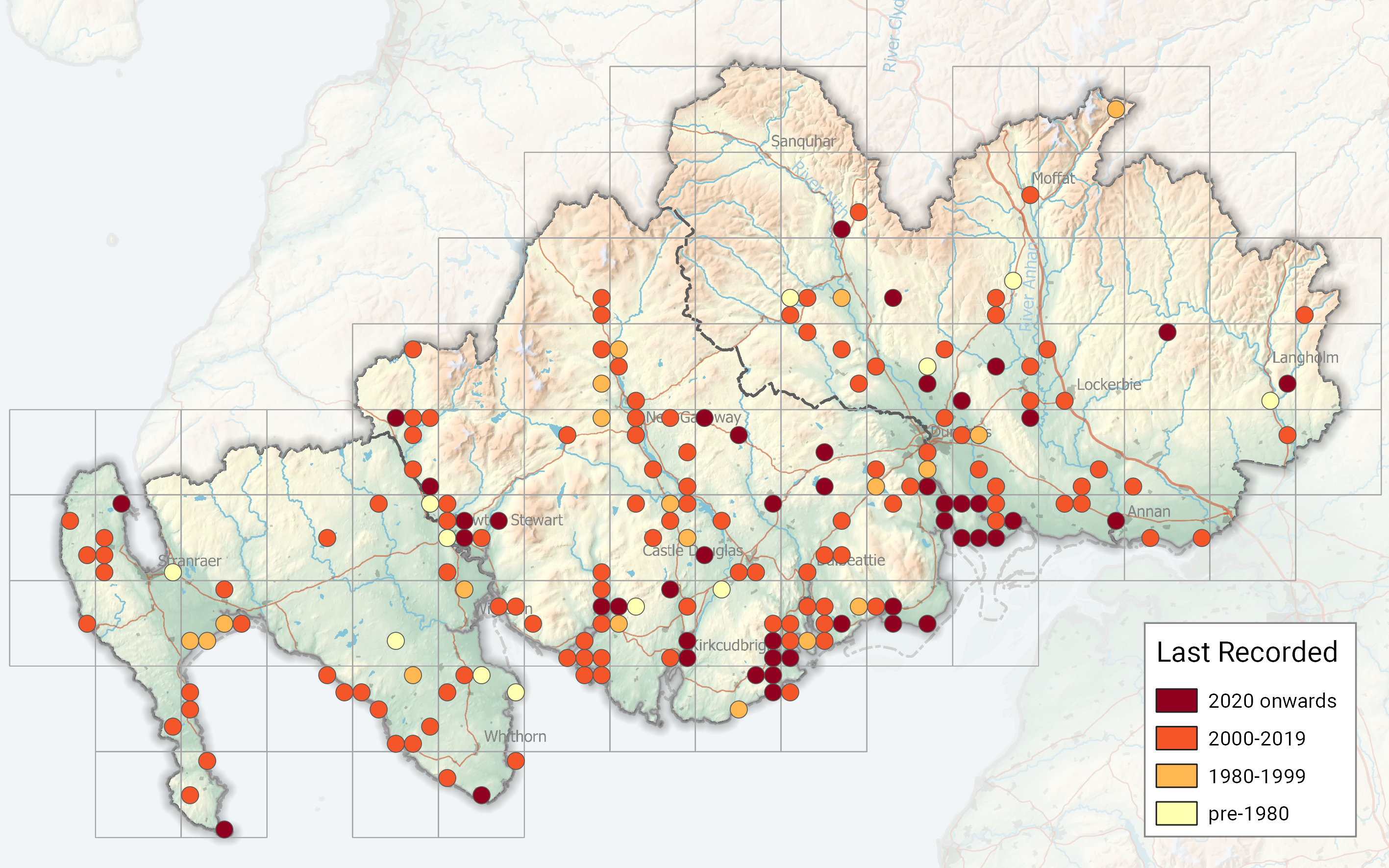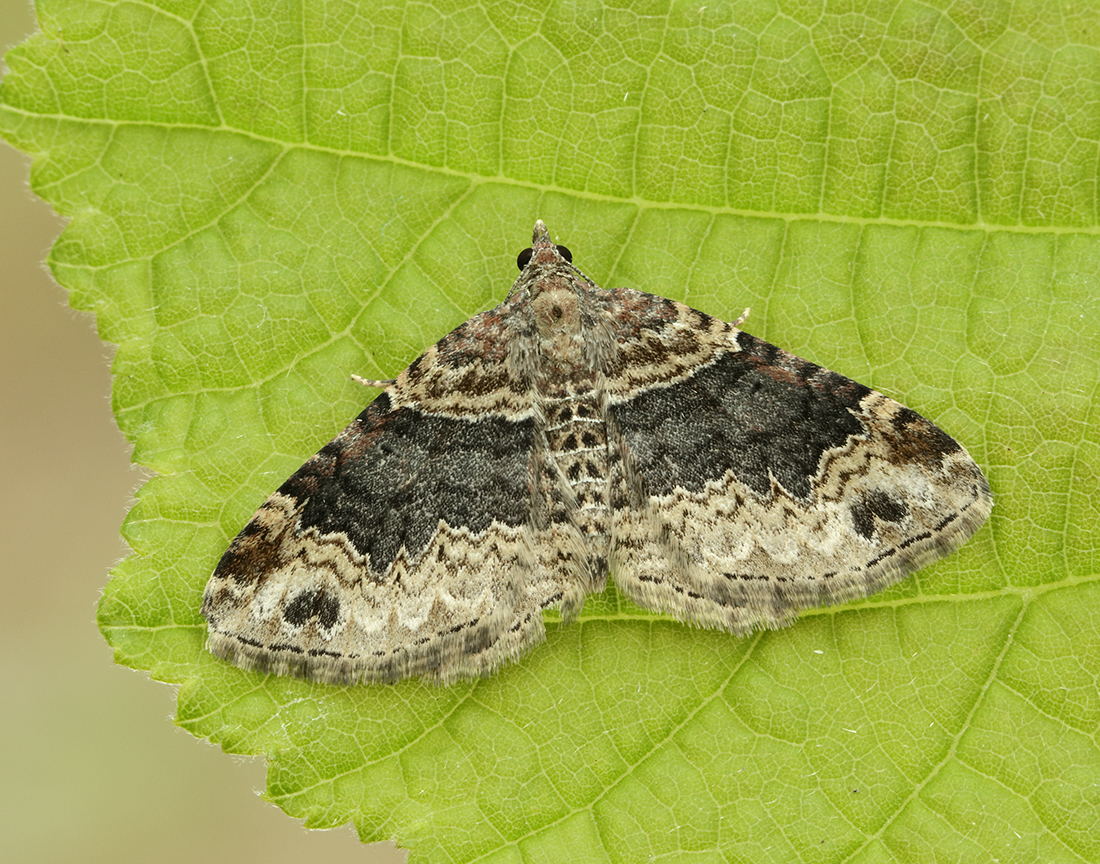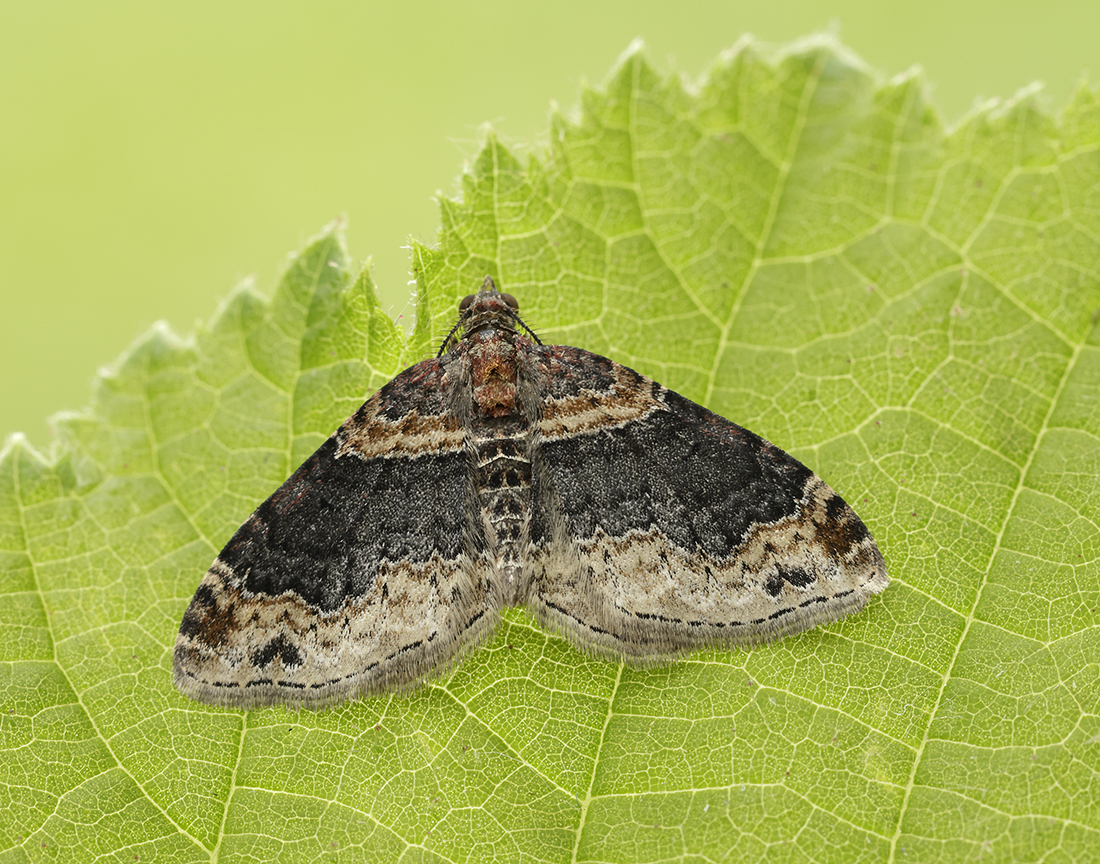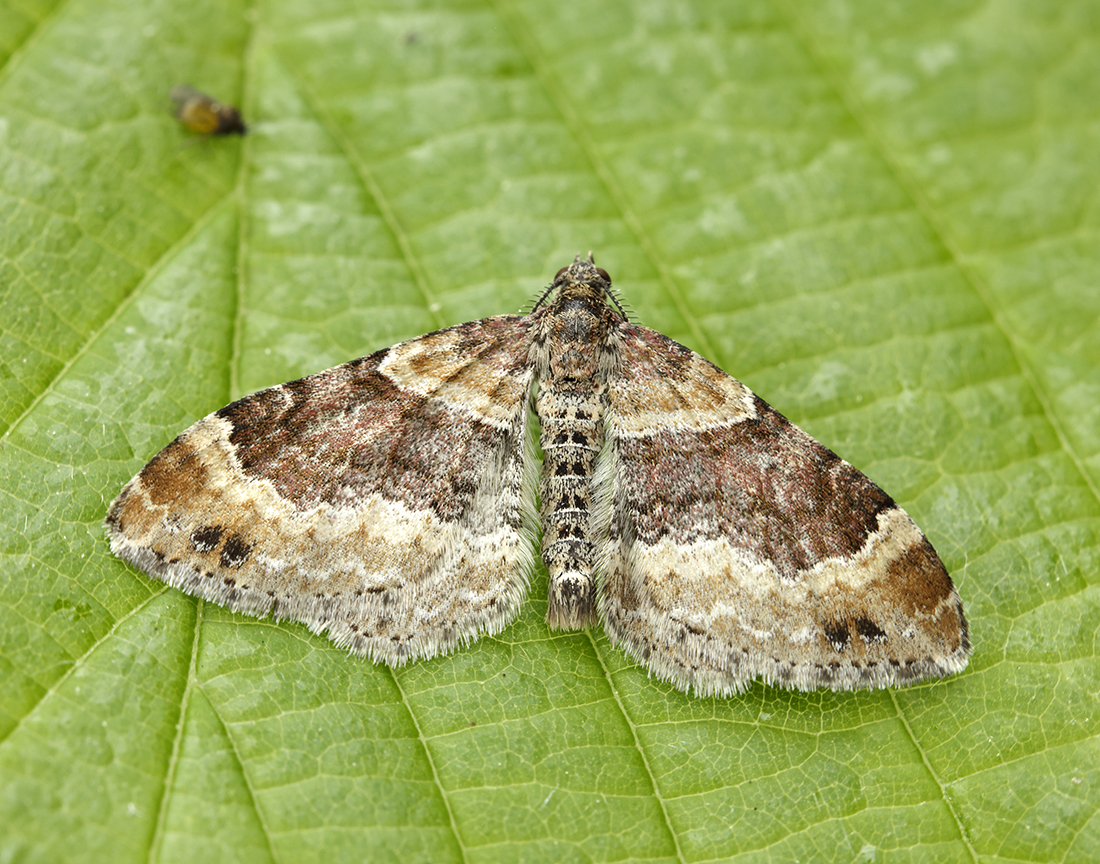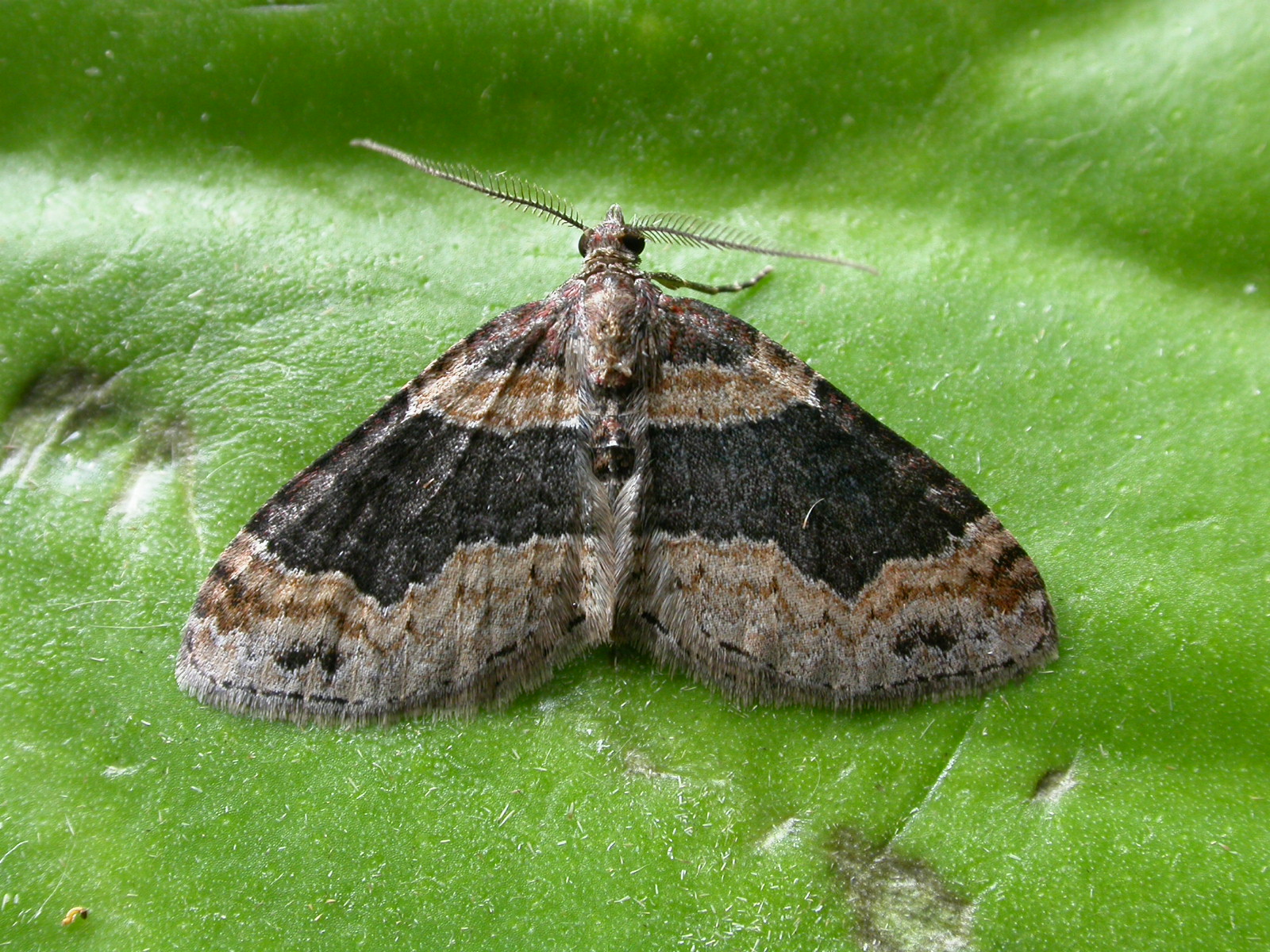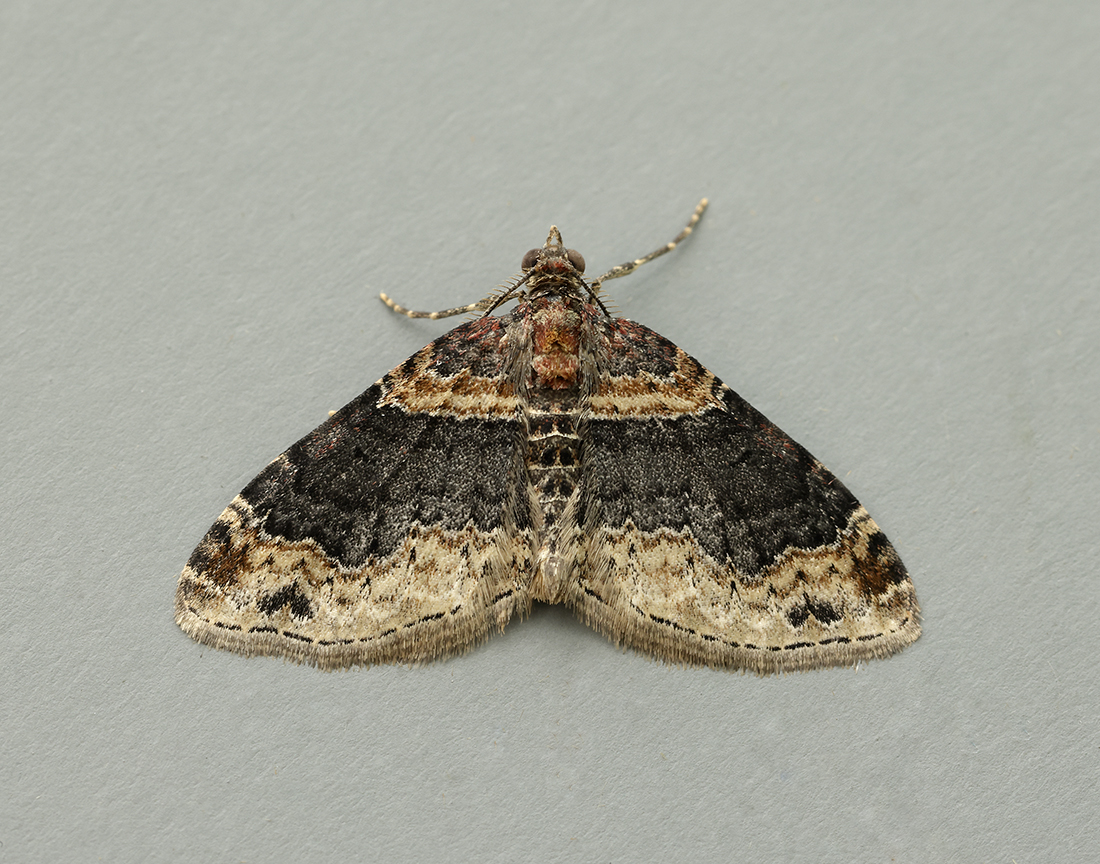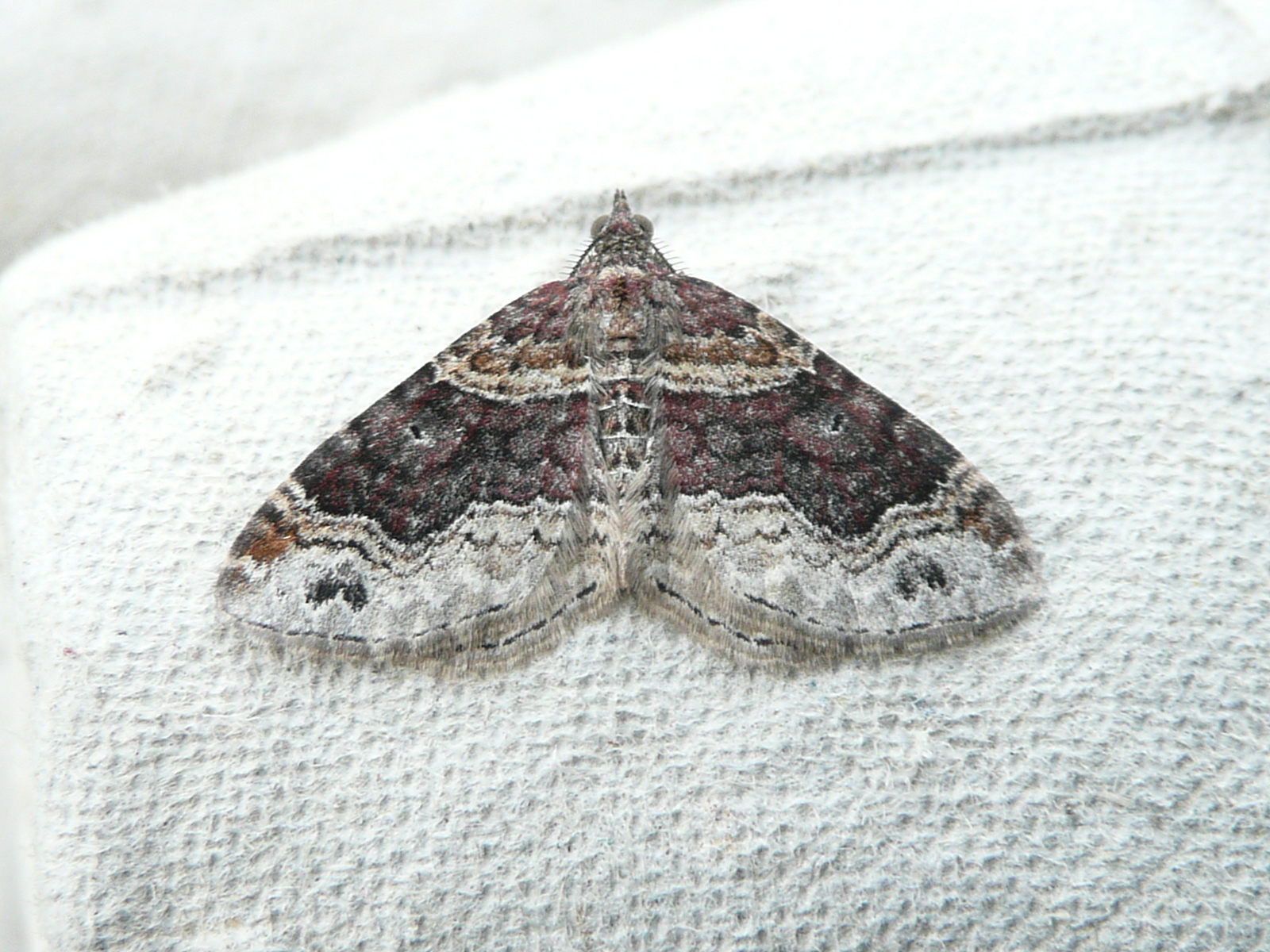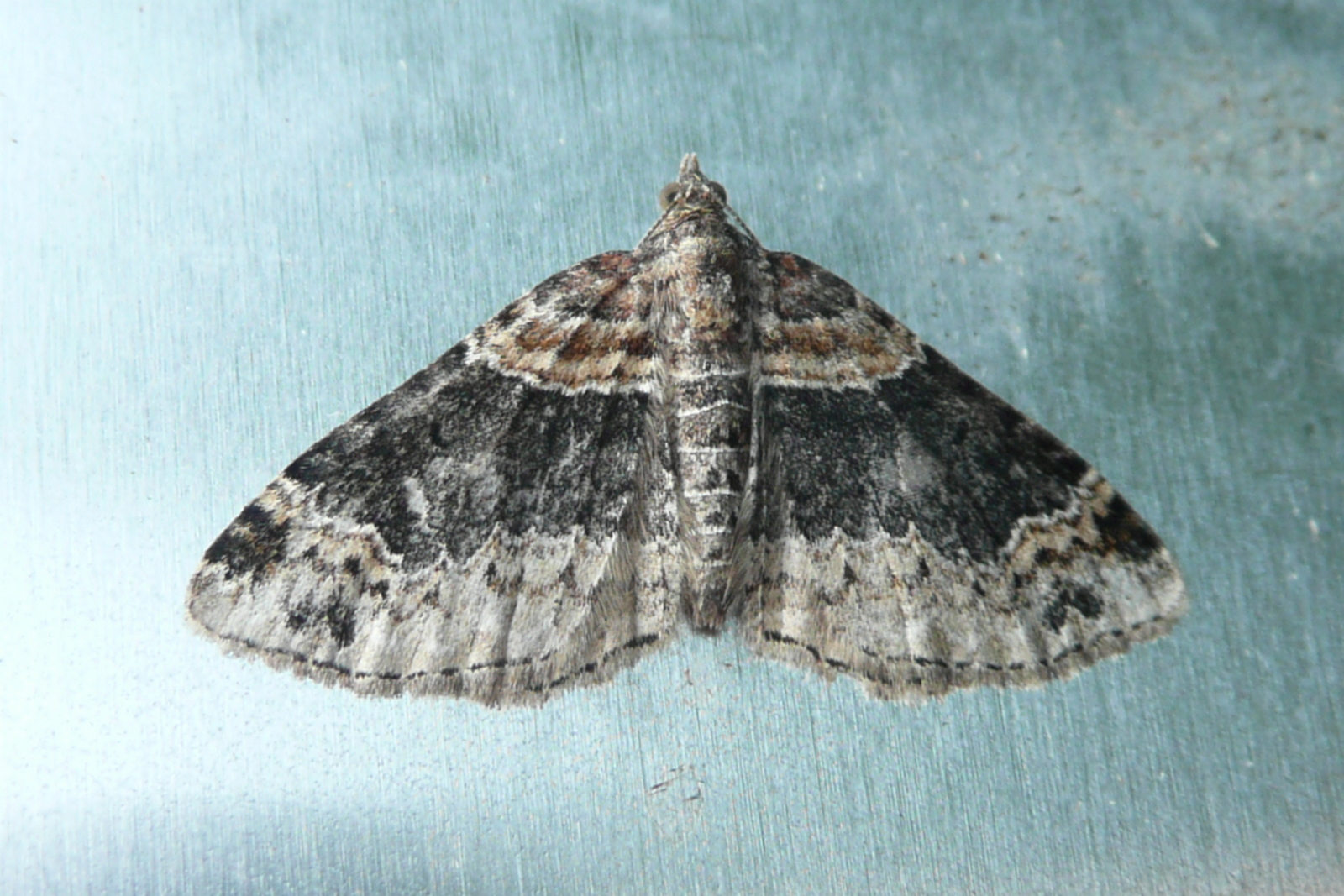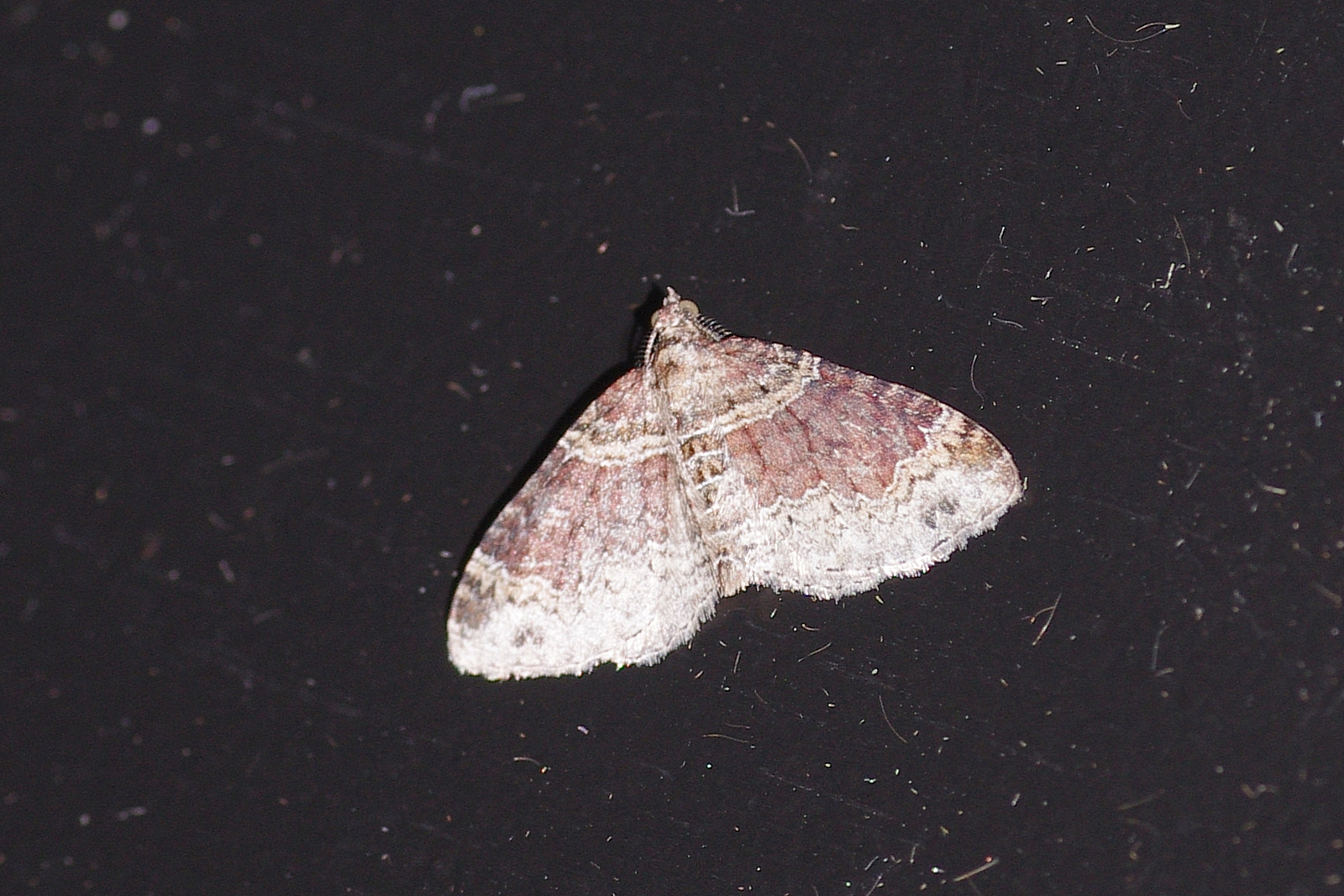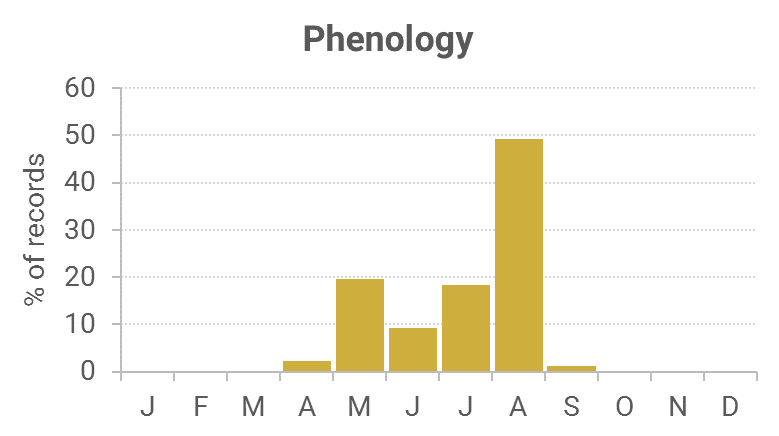See also Moth of the Week (10/05/2020)
Identification
Great care is need in separating this species from Red Twin-spot Carpet. Use the following criteria.The notch in the inner edge of the median fascia of the forewing near to the costa mentioned in Skinner (1984, 1998) and Waring et al. (2003) as a distinguishing feature from Red Twin-spot Carpet has been proved not to be a reliable feature as both species (Red Twin-spot Carpet) can show it. In the most populous form unidentaria Haworth the central cross band on the forewing is of a blackish-grey (this needs to be viewed in good daylight) and should lack any trace of red or purple. With the wings held in the upright position another clue is the plain-looking undersides which lack tawny colouring near the apex of the forewing. Some moths may be indeterminate and would require their genitalia checking.
Life cycle
Two overlapping generations. Overwinters as a pupa, which is to be found in a cocoon in plant debris. Larvae are present July to August.
Larval foodplants
Larvae feed on bedstraws, docks and other herbaceous plants.
Habitat
Wide range of habitats.
History
First recorded for Dumfries and Galloway in VC72 at Redhills, south of Beattock by Little, for VC73 in 1870 at Colvend by Little and for VC74 in 1898 at Corsemalzie by Gordon who recorded that it was ‘common at light’.

